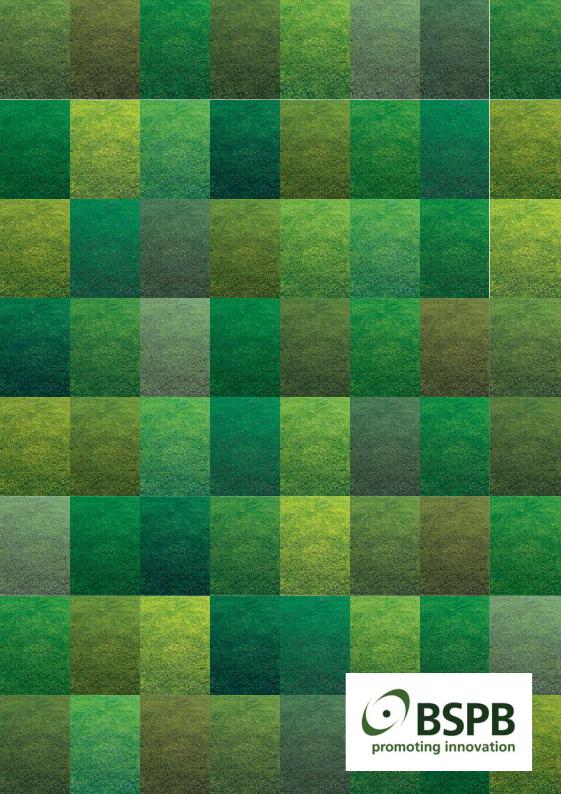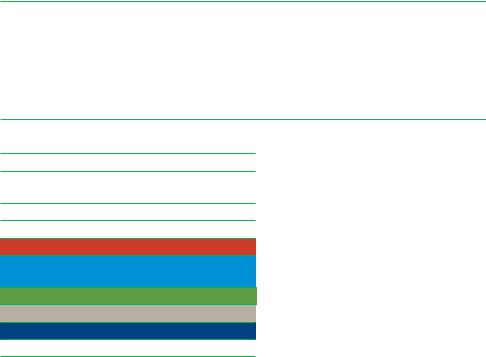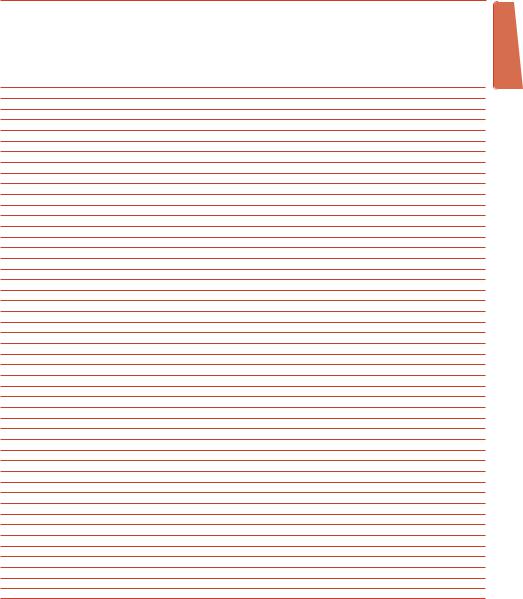
BSPB_Turfgrass_2014
.pdf
Turfgrass Seed
The buyers guide to quality amenity turfgrasses
2014



Contents
1Introduction
2The BSPB Amenity Committee and the Turfgrass Seed Trials
3Guide to using Turfgrass Seed 2014
4Assessment of Characters
5Series S – Sports Uses
10Series L – Lawns, Landscaping, Summer Sports and Turf Trials
19 Series G – Greens, Close Mown Trials
24Series M – Miscellaneous Grasses
25Index
28 Agents
Turfgrass Seed 2014 |
1 |

The BSPB Amenity Committee and the Turfgrass Seed Trials
Introduction |
The BSPB Amenity Committee |
The development of grass varieties for amenity uses is a long-term, costly and sophisticated business. Plant breeding (crossing, selecting and conducting trials) typically takes a decade or more, before varieties are ready for release into Governmental registration and Industry performance trials. Subsequent investment in production, stock-holding, manufacturing and marketing is expensive. The exploitation and utilisation of the superior varieties made available by this process require expert guidance and advice.
The purpose of Turfgrass Seed is to report comprehensive results of available varieties in trials designed to test suitability for:
Use in winter sports pitches, such as football and rugby fields, and municipal recreation areas (Sports Uses Trials)
Use in lawns, summer sports pitches, tennis courts, turf and general landscaping (Lawn Landscaping, Summer Sports and Turf Trials)
Use in the intensive management seen on golf and bowling greens (Greens, Close Mown Trials).
Turfgrass Seed presents the best available interpretation of correctly designed, accurately analysed and independently supervised trials to our collective customer, the professional user of high quality amenity grass cultivars.
The Turfgrass trials are conducted in Bingley, West Yorkshire
BSPB is the trade association, based at Ely in Cambridgeshire, which represents the interests of companies with plant breeding and seeds supply businesses in the UK. Companies can participate as Full Members or Associates and the Society caters for businesses with large or small turnovers.
The major functions of BSPB include:
•Acting on behalf of plant breeders to Licence and collect Royalties for the production of seed of protected varieties by third parties.
•Representing the interests of its members opposite Government and the European Commission.
•Co-ordinating agreements with independent trialling organisations to facilitate the production of recommended and descriptive lists of varieties.
The BSPB Amenity Committee comprises representatives of all the major breeders developing new cultivars for customers in the UK. Its objectives include the long term:
•Coordination and funding of independent amenity variety trialling.
•Continuity of the integrity of Turfgrass Seed as a source of impartial and valid information to buyers and users of amenity grass seed.
2 Turfgrass Seed 2014

Guide to using Turfgrass Seed 2014
The lists contained in this booklet are designed to enable users of Turfgrass Seed to evaluate the suitability of different cultivars for various amenity uses. Information for the major turfgrass species is presented in the form of numerical scores. In each column, larger numbers indicate a higher score for the relevant characteristic. For instance, cultivars with a score of 8.0 for shoot density would be expected to produce denser turf than those with a score of 7.0.
The only exception to this general rule is the rating for colour. On this scale higher numbers are darker green. These colour scores are descriptive, to help with colour matching when blending varieties in mixtures. They are not merit ratings and in this case larger numbers do not indicate a higher merit score.
Users should read the text regarding the selection of grasses for each table to determine which grasses best suit their particular needs. Cultivars of the major turfgrass species have been placed in order of suitability for particular uses. The characteristics that have been used to determine this ranking order have been shaded. Where more than one characteristic has been used, a mean has been calculated and added to the table. When calculated, this mean has been placed within the shaded area, to the right of the characteristics used in its calculation.
Cultivars at the top of each list may not be the best cultivars for every use. Users should identify which characteristics are most important for their intended use and then select cultivars accordingly.
The tables are numbered according to their applicability to different end uses, thus:
S Sports
L General lawn and landscaping
GGolf and bowling greens and other close mown situations
Seed of all cultivars named should be available in the UK in 2014 but in smaller amounts where shown as LA (Limited Availability). The full names and addresses for the main seed suppliers representing grasses in the tables are presented on page 28. For grasses where no main agent is identified, users should contact BSPB for further information.
The tables have been split into two sections to give a main table and a new cultivar table. The latter section is reserved for cultivars that have been tested in only the most recent set of trials. The scores in this section of the tables should be regarded with less certainty than the scores in the main sections of the tables. Please note that ratings are not directly comparable among species and uses.
The information presented in Turfgrass Seed 2014 is from trials conducted at the STRI. As with any trial of living material, the performance of the cultivars may vary in commercial management.
Turfgrass Seed 2014 |
3 |

Assessment of characters
VISUAL MERIT
Visual merit is an overall measure of the suitability of the sward for its potential use. Visual merit is a combination of sward density, leaf width, disease resistance and colour.
SHOOT DENSITY
In most applications of amenity grass a dense sward is required, especially when a uniform and true surface is needed, such as golf greens. The number of shoots per unit area is assessed to give a measure of sward density of the sown species.
LIVE GROUND COVER
The live ground cover is regarded as more important than shoot density in winter sports turf. The ground cover of the sown species is recorded monthly during the application of artificial football wear to determine wear tolerance.
SLOW RE-GROWTH
Mowing accounts for the majority of the cost of maintaining amenity grass. During the growing season (April to October) the sward height is measured immediately prior to each cut.
FINENESS OF LEAF
The leaf width of different varieties of grasses varies, especially for perennial ryegrasses and smooth-stalked meadow-grass. Fine leaves are desirable in fine turf and ornamental lawns. This assessment is not undertaken for Chewings fescues, hard & sheep’s fescues, slender creeping red fescues or strong creeping red fescues where there is little difference among these fine-leaved grasses.
CLEANNESS OF CUTTING
Each variety is scored for cleanness of cutting. Some data shown for this characteristic in the intensive wear trials are taken from the lawn/landscaping trials.
DISEASE RESISTANCE
At a time when the usage of pesticides and the products available for use on amenity grasses are declining, disease resistance is of ever increasing importance. All trials are monitored for disease and scored when significant disease infections occur.
COLOUR
Cultivars are assessed for genetic colour in both summer and winter. This is a relative assessment between different varieties and colour will vary depending upon management and fertiliser use.
RECOVERY
The winter sports turf trial is scored for two months following the application of artificial football wear to give an indication of individual varieties ability to recover from wear. Higher scoring varieties are less likely to need intensive renovation in the closed season. Care should be taken when considering varieties for this characteristic as data are available only from a limited number of trials.
4 Turfgrass Seed 2014

Series S
Sports Uses (Mown at 25mm)
Perennial ryegrass (Table S1) Smooth-stalked meadow-grass (Table S2) Tall fescue (Table S3)
Tufted hair-grass (Table S4)
Applications
Winter sports pitches
Football and Rugby pitches
Municipal sports areas
Other intensively used areas
The perennial ryegrass cultivars in Table S1 (pages 6 and 7) are ranked on the mean of live ground cover and visual merit during wear. These characteristics are important for sports pitches receiving intensive wear during winter, such as football and Rugby pitches.
Users should identify the particular properties that are important in their individual situations and choose cultivars that score well for those characteristics. In football and Rugby pitches for example, it may be better to choose a cultivar with reduced susceptibility to red thread, if this can be done without compromising too much on wear tolerance. Where good appearance is required before wear, or in low wear situations, good shoot density, fineness of leaf and cleanness of cut scores will be important.
In all wear situations regular over-seeding can have beneficial results. It is strongly advised that this forms part of the end of season renovation programme. Also the addition of new grasses through over-seeding during the playing season will help maintain ground cover.
Cultivars of smooth-stalked meadow-grasses are shown in order of their performance under football-type wear for inclusion in winter pitches (Table S2). Once established, smooth-stalked meadow-grass can be as hard wearing as perennial ryegrass and usually has better tolerance of close mowing.
Its rhizomes give good recovery from wear and some drought tolerance. However, establishment of this grass is slow and best results can only be achieved if at least 12 months is left between sowing and use. Some of the data in Table S2 (page 8) are from trials allowed to establish for one year before the application of wear. Current trials are sown in spring with wear being applied the following autumn.
Generally, cultivars of tall fescue form turf that would be acceptable for many coarse turfgrass uses. However, they are no substitute for perennial ryegrass in normal turf situations in the UK. Tall fescues are slower in establishment, coarser in leaf texture, and as a result, less attractive in appearance. They may however, have a place under dry or low fertility conditions. Tall fescues have also been used successfully where fairly tall (1520cm) but still erect swards are desirable, such as the grassed areas surrounding airfields. New improved varieties of this grass type, some with rhizomes, are starting to become available. These produce acceptable lawns but still do not match perennial ryegrass for wear tolerance.
Tufted hair-grass is tolerant of damp and shady conditions and has been included in some seed mixtures for stadiums. This grass can accumulate a little more organic matter at the surface than some of the traditional sports grasses like perennial ryegrass.
Turfgrass Seed 2014 |
5 |

Sports
Series S
Sports Uses (Mown at 25mm)
Table S1
Perennial ryegrass |
(Lolium perenne) |
|
|
|
|
|
|
|
|
|||
|
|
|
|
|
|
|
|
|
|
|
|
|
|
|
|
|
Recovery |
Shoot density |
Fineness of leaf |
Cleanness of cut |
Resistance to Red thread |
Winter greenness |
Summer greenness |
|
|
Cultivar |
Live ground cover |
Visual merit |
Mean |
Agent |
|
|||||||
Eurodiamond |
8.2 |
8.1 |
8.1 |
7.8 |
8.0 |
6.8 |
- |
2.8 |
5.2 |
5.3 |
DLF/JNS |
|
Barorlando |
8.1 |
8.0 |
8.1 |
6.9 |
8.1 |
7.1 |
7.5 |
5.7 |
5.6 |
7.4 |
BAR |
|
Columbine |
8.1 |
8.0 |
8.1 |
7.7 |
7.6 |
6.9 |
4.3 |
5.4 |
5.6 |
6.1 |
DLF/JNS/TG |
|
Monroe |
8.0 |
8.2 |
8.1 |
7.7 |
8.2 |
8.6 |
5.5 |
6.4 |
6.0 |
6.4 |
DLF/JNS |
|
EuroCordus |
8.1 |
8.0 |
8.1 |
7.3 |
8.2 |
7.1 |
- |
- |
5.4 |
5.6 |
EG |
|
Barcristalla |
8.1 |
8.0 |
8.0 |
6.9 |
8.0 |
7.5 |
7.2 |
5.7 |
6.1 |
7.5 |
BAR |
|
EuroSport (LA) |
7.9 |
8.0 |
7.9 |
7.8 |
8.0 |
7.2 |
- |
- |
5.7 |
5.9 |
EG |
|
Eugenius |
7.8 |
7.8 |
7.8 |
6.7 |
7.9 |
7.3 |
7.0 |
4.3 |
4.9 |
5.4 |
BSH |
|
Milan |
7.5 |
8.0 |
7.7 |
8.3 |
7.9 |
7.6 |
- |
6.4 |
5.2 |
5.7 |
LMG |
|
Madrid |
7.7 |
7.7 |
7.7 |
7.9 |
7.6 |
6.8 |
- |
6.1 |
5.4 |
6.3 |
LMG |
|
Cyrena |
7.6 |
7.7 |
7.6 |
7.3 |
7.7 |
6.9 |
7.0 |
6.4 |
5.1 |
6.2 |
LMG |
|
Chardin |
7.5 |
7.8 |
7.6 |
6.5 |
7.7 |
8.3 |
8.0 |
5.9 |
4.9 |
5.4 |
DLF/JNS |
|
Poseidon |
7.8 |
7.5 |
7.6 |
7.1 |
7.5 |
6.5 |
4.4 |
5.5 |
4.9 |
5.4 |
RT/TG |
|
Shorty |
7.5 |
7.5 |
7.5 |
6.6 |
7.2 |
7.1 |
4.4 |
4.3 |
5.3 |
5.3 |
EG |
|
Duparc |
7.3 |
7.6 |
7.5 |
7.2 |
7.2 |
7.3 |
6.5 |
7.4 |
5.1 |
5.6 |
RT/TG |
|
Promotor |
7.4 |
7.4 |
7.4 |
7.4 |
7.4 |
6.7 |
5.0 |
5.0 |
5.1 |
6.1 |
BSH |
|
Cadix |
7.2 |
7.6 |
7.4 |
7.7 |
7.1 |
7.3 |
5.9 |
5.4 |
6.0 |
5.9 |
BSH/CARN |
|
Vesuvius |
7.1 |
7.6 |
7.4 |
7.7 |
7.4 |
6.7 |
- |
5.7 |
4.7 |
5.7 |
BSH |
|
Nagano (LA) |
7.3 |
7.4 |
7.4 |
7.4 |
7.0 |
6.7 |
7.3 |
5.3 |
5.1 |
5.4 |
LMG |
|
Barolympic (LA) |
7.3 |
7.4 |
7.3 |
6.8 |
7.7 |
7.5 |
- |
- |
4.2 |
5.2 |
BAR |
|
Berlioz 1 |
7.3 |
7.4 |
7.3 |
7.0 |
7.3 |
6.5 |
- |
6.2 |
5.7 |
5.5 |
DLF/JNS/TG |
|
Bareuro |
7.3 |
7.3 |
7.3 |
7.9 |
6.9 |
6.8 |
7.1 |
5.2 |
5.1 |
5.7 |
BAR |
|
Bizet 1 |
7.3 |
7.3 |
7.3 |
7.7 |
6.0 |
6.0 |
5.8 |
6.9 |
6.0 |
6.3 |
DLF/JNS |
|
Carnac |
7.1 |
7.5 |
7.3 |
7.5 |
6.7 |
6.8 |
6.2 |
6.7 |
6.0 |
5.8 |
BSH/CARN |
|
Korfu |
7.2 |
7.3 |
7.3 |
6.5 |
7.8 |
6.6 |
6.6 |
5.0 |
4.9 |
5.9 |
DLF |
|
Enesco (LA) |
7.3 |
7.3 |
7.3 |
6.6 |
7.6 |
7.8 |
5.0 |
6.0 |
6.0 |
6.0 |
DLF |
|
Beckham (LA) |
7.2 |
7.2 |
7.2 |
6.1 |
7.1 |
6.6 |
- |
- |
5.3 |
5.2 |
EG |
|
Florianne (LA) |
7.2 |
7.2 |
7.2 |
7.2 |
7.0 |
6.8 |
5.6 |
5.3 |
5.7 |
5.9 |
DLF |
|
Ligala |
7.1 |
7.4 |
7.2 |
7.5 |
7.0 |
7.6 |
5.3 |
5.8 |
5.4 |
5.6 |
DLF/JNS |
|
Himalaya |
7.2 |
7.1 |
7.2 |
7.9 |
7.0 |
6.5 |
- |
4.1 |
5.5 |
6.0 |
DLF/LMG |
|
Claudine (LA) |
7.1 |
7.2 |
7.1 |
6.2 |
7.5 |
7.2 |
- |
- |
5.4 |
6.4 |
DLF |
|
Melbourne |
7.0 |
7.3 |
7.1 |
6.6 |
7.6 |
7.6 |
- |
7.5 |
5.4 |
5.7 |
LMG |
|
Vitellius |
6.9 |
7.2 |
7.1 |
7.6 |
6.7 |
6.3 |
- |
6.1 |
5.9 |
6.3 |
BSH |
|
Romance |
7.0 |
7.1 |
7.1 |
6.9 |
7.0 |
6.3 |
5.2 |
5.5 |
6.1 |
5.5 |
BAR |
|
Aiken (LA) |
7.0 |
7.1 |
7.0 |
6.6 |
7.3 |
8.0 |
5.6 |
6.7 |
5.3 |
6.1 |
DLF |
|
Barillion |
7.1 |
7.0 |
7.0 |
6.3 |
7.3 |
6.2 |
6.5 |
6.0 |
5.4 |
6.4 |
BAR |
|
Lucius |
6.8 |
7.1 |
7.0 |
6.3 |
7.5 |
7.3 |
6.3 |
5.2 |
5.1 |
5.3 |
BSH |
|
Greenfair |
6.9 |
7.0 |
6.9 |
6.5 |
6.6 |
6.6 |
6.2 |
5.9 |
5.7 |
6.1 |
SUT/RT/TG |
|
Clementine (LA) |
6.8 |
6.9 |
6.9 |
6.9 |
7.4 |
7.9 |
7.8 |
6.0 |
5.4 |
5.9 |
DLF/JNS/TG |
|
Barsignum |
6.8 |
6.9 |
6.8 |
5.9 |
7.6 |
8.3 |
4.8 |
5.1 |
5.1 |
6.5 |
BAR |
|
Busoni 1 (LA) |
6.8 |
6.8 |
6.8 |
6.4 |
6.2 |
5.7 |
4.8 |
5.9 |
5.7 |
6.6 |
DLF |
|
Mercitwo |
6.8 |
6.9 |
6.8 |
6.5 |
6.4 |
7.3 |
7.3 |
5.5 |
4.9 |
5.3 |
RT/TG |
|
Hugo 1 |
6.8 |
6.9 |
6.8 |
6.5 |
5.0 |
5.3 |
6.4 |
5.3 |
5.5 |
5.7 |
DLF/TG |
|
Shania (LA) |
6.8 |
6.9 |
6.8 |
6.6 |
7.4 |
7.4 |
- |
- |
5.8 |
6.1 |
DLF |
|
Bellini 1 |
6.8 |
6.8 |
6.8 |
6.4 |
6.2 |
6.0 |
- |
5.1 |
5.5 |
5.7 |
DLF |
|
Alboka (LA) |
6.7 |
6.8 |
6.7 |
6.4 |
7.5 |
7.2 |
7.0 |
7.7 |
6.6 |
6.9 |
BAR |
|
Greenway |
6.7 |
6.7 |
6.7 |
6.4 |
6.7 |
7.4 |
5.6 |
6.3 |
6.3 |
6.0 |
SUT/RT/TG |
|
Cleopatra |
6.6 |
6.8 |
6.7 |
7.7 |
6.4 |
5.9 |
- |
7.1 |
4.7 |
5.4 |
DLF |
|
Bocelli |
6.8 |
6.7 |
6.7 |
6.3 |
7.4 |
6.9 |
6.6 |
5.7 |
4.9 |
6.4 |
LMG |
|
Verdi |
7.0 |
6.4 |
6.7 |
6.4 |
5.6 |
5.3 |
5.7 |
5.9 |
6.5 |
6.9 |
BAR |
|
6 Turfgrass Seed 2014

Table S1 Continued
Cultivar
Fandango
Toldo (LA)
Concerto
Dickens 1
Greensky
Lourega
Barlennium
Essence
Ragtime (LA)
AberImp
Margarita
Conrad 1
Bardorado
Ceretec Centurion
Bargold
Alanis (LA)
Flamenco
Kalmia (LA)
Stolawn
Ponderosa
Sirtaky
Escapade
Platinum
Transate
Greenglide
Jubilee EG
Doremi
Barminton
Antonella (LA)
Traffic
Stravinsky
Cachemire
Liromeo
Libero
Fancy
Cassiopeia
Turfgold
Barrocky
Disco
Esquire
Limonica
Lifrance
Kokomo
Neruda 1
Recital (LA)
Capri
Vienna
Mondial
Live ground cover |
Visual merit |
Mean |
Recovery |
Shoot density |
Fineness of leaf |
Cleanness of cut |
Resistance to Red thread |
Winter greenness |
Summer greenness |
Agent |
Sports |
6.7 |
6.7 |
6.7 |
7.3 |
6.9 |
6.2 |
- |
5.9 |
5.8 |
5.6 |
BAR |
|
6.6 |
6.8 |
6.7 |
5.4 |
7.1 |
7.2 |
6.0 |
6.0 |
4.8 |
5.4 |
DLF |
|
6.5 |
6.8 |
6.7 |
7.6 |
5.9 |
5.0 |
6.4 |
5.7 |
6.3 |
6.0 |
BAR |
|
6.4 |
6.8 |
6.6 |
6.9 |
8.1 |
7.9 |
- |
6.2 |
4.7 |
5.4 |
DLF/JNS |
|
6.6 |
6.6 |
6.6 |
6.8 |
6.5 |
6.4 |
- |
5.9 |
5.2 |
5.1 |
RT/TG |
|
6.6 |
6.6 |
6.6 |
6.3 |
6.8 |
5.2 |
- |
7.2 |
6.3 |
6.5 |
EG |
|
6.7 |
6.5 |
6.6 |
5.4 |
6.5 |
5.6 |
6.5 |
6.4 |
7.6 |
7.7 |
BAR |
|
6.9 |
6.4 |
6.6 |
5.4 |
6.8 |
6.5 |
6.1 |
4.6 |
6.2 |
5.4 |
DLF |
|
6.5 |
6.7 |
6.6 |
6.4 |
6.1 |
5.8 |
6.4 |
6.5 |
5.9 |
6.1 |
BAR |
|
6.5 |
6.7 |
6.6 |
6.6 |
6.0 |
6.0 |
7.1 |
6.2 |
5.5 |
6.5 |
BSH |
|
6.3 |
6.8 |
6.6 |
6.4 |
6.7 |
6.8 |
5.3 |
5.5 |
6.2 |
5.9 |
DLF |
|
6.4 |
6.6 |
6.5 |
6.6 |
6.6 |
6.5 |
5.4 |
6.6 |
7.0 |
5.6 |
DLF |
|
6.6 |
6.4 |
6.5 |
5.8 |
6.4 |
5.5 |
6.8 |
6.5 |
5.0 |
5.3 |
BAR |
|
6.6 |
6.5 |
6.5 |
5.8 |
6.5 |
6.0 |
6.8 |
5.1 |
7.3 |
7.2 |
PGW |
|
6.3 |
6.6 |
6.5 |
6.6 |
7.3 |
8.1 |
7.0 |
6.0 |
5.6 |
5.7 |
BAR |
|
6.3 |
6.6 |
6.5 |
6.3 |
6.8 |
6.4 |
- |
- |
5.8 |
6.2 |
DLF |
|
6.5 |
6.3 |
6.4 |
6.1 |
6.4 |
6.8 |
- |
5.4 |
5.6 |
5.9 |
BAR |
|
6.4 |
6.3 |
6.3 |
5.9 |
6.8 |
6.8 |
5.0 |
5.3 |
5.0 |
5.7 |
DLF |
|
6.1 |
6.6 |
6.3 |
5.4 |
6.4 |
6.3 |
6.1 |
6.2 |
5.8 |
6.4 |
RT/TG |
|
6.5 |
6.2 |
6.3 |
6.3 |
6.5 |
5.6 |
5.7 |
5.5 |
6.6 |
5.9 |
LMG |
|
6.3 |
6.3 |
6.3 |
6.9 |
6.9 |
6.9 |
- |
6.8 |
5.9 |
5.6 |
BAR |
|
6.1 |
6.4 |
6.3 |
7.4 |
6.6 |
8.6 |
4.4 |
4.5 |
6.1 |
6.0 |
BSH/CARN |
|
6.6 |
5.9 |
6.3 |
5.6 |
5.4 |
5.0 |
6.2 |
5.5 |
7.4 |
6.4 |
DLF |
|
6.2 |
6.2 |
6.2 |
5.5 |
6.0 |
6.1 |
- |
7.3 |
5.6 |
6.0 |
EG |
|
6.2 |
6.1 |
6.2 |
6.0 |
6.1 |
6.0 |
- |
4.9 |
5.1 |
5.4 |
DLF |
|
6.1 |
6.2 |
6.1 |
5.8 |
6.1 |
5.8 |
7.2 |
5.1 |
5.8 |
6.5 |
EG |
|
5.9 |
6.3 |
6.1 |
6.0 |
6.3 |
5.7 |
7.0 |
7.0 |
5.2 |
6.3 |
LMG |
|
6.1 |
6.1 |
6.1 |
5.7 |
6.1 |
6.0 |
6.7 |
5.1 |
5.6 |
6.2 |
BAR |
|
6.2 |
6.0 |
6.1 |
6.3 |
6.4 |
6.8 |
- |
- |
5.7 |
6.6 |
DLF/TG |
|
6.0 |
6.1 |
6.1 |
6.4 |
6.1 |
7.3 |
6.1 |
5.2 |
5.1 |
6.2 |
EG |
|
6.3 |
5.8 |
6.0 |
5.8 |
5.9 |
4.9 |
5.4 |
6.8 |
8.4 |
8.0 |
DLF |
|
5.8 |
6.2 |
6.0 |
6.9 |
6.1 |
7.3 |
5.5 |
5.1 |
5.5 |
5.6 |
GGR |
|
5.9 |
6.1 |
6.0 |
6.2 |
6.2 |
6.0 |
- |
7.3 |
6.4 |
6.7 |
EG |
|
6.0 |
6.0 |
6.0 |
5.5 |
6.7 |
7.0 |
- |
5.5 |
5.9 |
6.6 |
DLF |
|
6.2 |
5.7 |
6.0 |
5.2 |
5.1 |
5.5 |
5.7 |
5.8 |
6.7 |
5.7 |
FF |
|
5.9 |
6.0 |
5.9 |
5.8 |
6.8 |
7.2 |
- |
6.0 |
5.3 |
6.0 |
DLF |
|
5.8 |
6.0 |
5.9 |
6.5 |
5.7 |
5.2 |
- |
6.2 |
6.6 |
6.9 |
EG |
|
5.8 |
6.1 |
5.9 |
6.5 |
6.8 |
6.9 |
- |
5.1 |
4.8 |
5.1 |
BAR |
|
5.8 |
5.8 |
5.8 |
5.1 |
5.2 |
5.6 |
5.8 |
5.6 |
6.2 |
5.0 |
LMG |
|
6.0 |
5.6 |
5.8 |
5.6 |
5.6 |
5.0 |
5.7 |
6.3 |
6.8 |
6.9 |
DLF |
|
5.8 |
5.8 |
5.8 |
5.8 |
5.4 |
5.3 |
- |
6.0 |
7.1 |
7.2 |
EG |
|
5.7 |
5.8 |
5.7 |
5.8 |
5.0 |
6.0 |
5.9 |
7.1 |
6.4 |
6.1 |
EG |
|
5.6 |
5.8 |
5.7 |
5.3 |
5.0 |
5.0 |
- |
6.8 |
8.4 |
8.1 |
DLF/LMG |
|
5.8 |
5.4 |
5.6 |
5.4 |
5.0 |
5.2 |
5.9 |
7.0 |
8.6 |
7.9 |
RT/TG |
|
5.6 |
5.6 |
5.6 |
5.1 |
6.5 |
6.7 |
6.5 |
7.1 |
6.3 |
6.9 |
BAR |
|
5.7 |
5.4 |
5.5 |
5.0 |
5.0 |
5.0 |
5.3 |
6.3 |
6.3 |
5.3 |
DLF |
|
5.4 |
5.6 |
5.5 |
5.6 |
4.8 |
4.9 |
5.5 |
5.6 |
5.4 |
5.1 |
LMG |
|
4.8 |
4.8 |
4.8 |
5.1 |
4.5 |
4.4 |
5.6 |
6.3 |
5.0 |
5.2 |
LMG |
|
The data for disease resistance and colour come from more than one type of trial - = Data not available.
Turfgrass Seed 2014 |
7 |

Sports
Series S
Sports Uses (Mown at 25mm)
Table S1s
Tetraploid ryegrasses
Tetraploid cultivars of perennial ryegrass are starting to be used in specialist seed mixtures for sports uses. These grasses should not be confused with more persistent diploid perennial ryegrass that are more commonly used in sports turf mixtures. In like-for-like comparisons, the traditional diploid grasses have greater wear tolerance and produce a more attractive sward. However, the tetraploid grasses have characteristics that can be exploited alongside traditional grasses. The main benefits are quicker germination and establishment in cool conditions and increased seedling vigour. Once established, they also tend to maintain growth longer than diploid cultivars as temperatures fall in the winter. This allows these grasses to replace lost grass cover during winter wear. The ratings presented are comparable with those given for diploid perennial ryegrass cultivars in Table S1.
Cultivar |
Live ground cover |
Visual merit |
Mean |
Recovery |
Shoot density |
Fineness of leaf |
Cleanness of cut |
Resistance to Red thread |
Winter greenness |
Summer greenness |
Agent |
|
Double |
5.5 |
5.0 |
5.2 |
4.1 |
4.7 |
3.8 |
6.1 |
7.8 |
7.3 |
7.5 |
DLF/JNS |
|
Tetragreen |
5.0 |
4.7 |
4.9 |
3.8 |
5.3 |
5.0 |
6.0 |
7.1 |
7.1 |
7.7 |
RT/TG |
|
New Cultivars |
|
|
|
|
|
|
|
|
|
|
|
|
Fabian |
6.2 |
6.1 |
6.2 |
6.0 |
5.5 |
5.3 |
- |
- |
6.1 |
6.7 |
DLF/JNS/TG |
|
Table S2
Smooth-stalked meadow-grass |
(Poa pratensis) |
|
|
|
|
|
|
|||||
|
|
|
|
|
|
|
|
|
|
|
|
|
|
|
|
|
|
Recovery |
Shoot density |
Fineness of leaf |
Resistance to Rust |
Winter greenness |
Summer greenness |
|
|
Cultivar |
Live ground cover |
Visual |
merit |
Mean |
Agent |
|
||||||
Sombrero |
7.3 |
7.5 |
7.4 |
7.5 |
7.9 |
7.7 |
5.2 |
5.6 |
6.7 |
DLF/JNS |
|
|
Julius |
7.3 |
7.4 |
7.4 |
7.5 |
7.2 |
6.6 |
5.2 |
5.3 |
4.9 |
DLF |
|
|
Harmonie |
7.3 |
7.3 |
7.3 |
6.8 |
7.7 |
7.9 |
4.9 |
6.6 |
6.2 |
DLF/TG |
|
|
Greenplay |
7.2 |
7.4 |
7.3 |
7.4 |
7.5 |
7.5 |
4.9 |
6.3 |
6.3 |
RT/TG |
|
|
Bariris |
7.2 |
7.4 |
7.3 |
7.4 |
7.4 |
7.4 |
4.7 |
6.7 |
6.2 |
BAR |
|
|
Barhelene |
7.2 |
7.3 |
7.2 |
7.4 |
7.7 |
7.7 |
4.9 |
5.7 |
6.2 |
BAR |
|
|
Kaitos (LA) |
7.1 |
7.2 |
7.2 |
7.2 |
7.6 |
7.5 |
5.5 |
6.4 |
6.4 |
DLF |
|
|
Joker |
7.1 |
7.2 |
7.1 |
6.9 |
7.7 |
8.2 |
6.6 |
5.9 |
6.3 |
BSH |
|
|
Limousine |
7.0 |
7.2 |
7.1 |
7.4 |
7.8 |
7.1 |
4.9 |
6.2 |
5.5 |
DLF/JNS |
|
|
Linares |
7.1 |
7.1 |
7.1 |
6.4 |
7.7 |
7.8 |
6.1 |
5.2 |
5.7 |
EG |
|
|
Julia |
6.9 |
7.2 |
7.0 |
7.5 |
6.7 |
6.3 |
5.5 |
6.4 |
6.0 |
BSH |
|
|
Lincolnshire |
6.7 |
7.1 |
6.9 |
7.1 |
6.8 |
6.9 |
4.5 |
6.4 |
5.0 |
DLF |
|
|
Panduro |
6.7 |
6.9 |
6.8 |
6.1 |
6.1 |
5.9 |
5.4 |
6.8 |
5.3 |
DLF |
|
|
Mozart 1 |
6.6 |
6.9 |
6.7 |
6.3 |
6.8 |
6.3 |
7.1 |
5.8 |
4.8 |
DLF |
|
|
Yvette |
6.6 |
6.6 |
6.6 |
6.1 |
6.9 |
6.9 |
6.9 |
5.9 |
5.8 |
LMG |
|
|
Broadway |
6.5 |
6.6 |
6.6 |
6.9 |
6.2 |
5.2 |
6.1 |
6.5 |
6.8 |
RT/TG |
|
|
Cocktail |
6.3 |
6.6 |
6.5 |
6.0 |
7.0 |
6.9 |
6.6 |
5.9 |
5.4 |
LMG |
|
|
Touche |
6.3 |
6.5 |
6.4 |
6.4 |
6.6 |
6.6 |
6.3 |
6.8 |
6.2 |
BAR |
|
|
Parsifal |
6.2 |
6.5 |
6.4 |
6.6 |
6.7 |
8.0 |
6.5 |
7.4 |
6.1 |
BSH |
|
|
Colonia (LA) |
6.2 |
6.3 |
6.3 |
6.0 |
6.3 |
5.7 |
6.1 |
7.4 |
7.0 |
DLF |
|
|
Miracle |
6.2 |
6.1 |
6.2 |
5.6 |
6.1 |
5.7 |
7.1 |
5.6 |
7.0 |
DLF |
|
|
Conni |
5.6 |
5.7 |
5.7 |
5.8 |
6.1 |
6.2 |
5.8 |
6.0 |
5.9 |
DLF |
|
|
Limerick |
5.3 |
5.4 |
5.3 |
5.8 |
6.2 |
6.4 |
6.5 |
5.8 |
5.6 |
EG |
|
|
Evora |
4.8 |
4.7 |
4.7 |
4.7 |
4.6 |
5.0 |
6.2 |
6.3 |
6.4 |
DLF |
|
|
Zeptor |
4.4 |
4.6 |
4.5 |
4.6 |
5.0 |
5.4 |
7.0 |
6.4 |
4.9 |
EG |
|
|
8 |
The data for disease resistance and colour come from more than one type of trial |
Turfgrass Seed 2014 |
